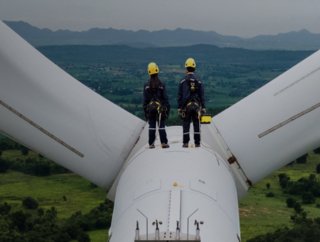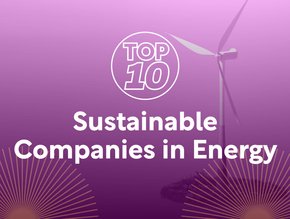Top 10 countries for renewable energy attractiveness

Energy security has risen to the top of priority lists, with governments around the world looking to accelerate and broaden the scope of their renewables programs to help reduce their reliance on imported energy at this volatile and unpredictable time, according to a new EY report.
A diversified strategy is necessary in the years ahead to accelerate the deployment of renewables, other fuels and technologies.
Here are the top 10 countries based on their renewable energy investment attractiveness.
10: Netherlands
Wind energy is likely to propel Netherlands to its climate goals but the European country is also making a name for itself in green hydrogen investment and other new technologies. It rises one place in the rankings from last year's report.
09: Spain
Spain has set itself an ambitious goal: by 2030, 42% of its energy produced must come from renewable energy sources. Its favourable geography and climate - high mountains and wind to supply electricity, abundant year-round sunshine and powerful rivers for hydroelectric power - means it may have a good chance of reaching it too.
08: Japan
A non-mover in eighth place, Japan is aiming for around 36-38% of its energy to come from renewables by 2030. A recent study has shown that Japan has 14 times more solar and offshore wind resources than needed to supply 100% renewable electricity.
07: India
India’s wind sector is struggling to match the explosive growth of the solar sector and is unlikely to hit its 60GW installation target by 2022. Nonetheless the broader picture is positive; its installed renewable energy capacity has increased a whopping 286% in the last 7.5 years and stands at more than 151.4GW.
06: Australia
Investment has been pouring into Australian renewables, such as $100mn for grid scale batteries and $40mn for low-cost solar. Opportunities are rising across the board, in wind, energy storage and hydrogen, and clean energy was listed as one of the government’s five priorities in the AD$1.5bn Modern Manufacturing Strategy announced in 2020.
05: France
Despite a slight decrease in ranking (falling one place), France sets ambitious 2050 renewables targets, with plans for 100GW of solar and 40GW of offshore wind, whilst also announcing €5bn ($5.3bn) spending for decarbonisation of heavy industry. In the short term, it is aiming for 32% renewables in energy mix by 2030.
04: Germany
Germany has brought forward its 100% green power target by 15 years, to 2035, and an 80% by 2030 goal has been set to increase energy security. Solar-loving Germany had the world's largest PV installed capacity until 2014, and as of 2021, it had over 58GW.
03: UK
With offshore wind, the UK recorded the highest technology-specific score in the report (62.7) and its onshore stats were impressive too (58.7), bettered only by the US. The UK government is aiming for offshore wind to produce more than enough electricity to power every home in the country by 2030, based on current electricity usage, boosting the government’s previous 30GW target to 40GW. Investment is pouring into Teesside and north-east region, which is a focal point for net zero and new energy technology investment.
02: Mainland China
China is straddling an energy tightrope - keen to increase its renewable energy output, while acknowledging that crude oil and natural gas production will remain pivotal to its economy. Last year China generated 2.48trn kWh of electricity from renewable energy sources, which accounted for 29.8% of the country’s total electricity consumption.
01: USA
Renewable energy generates about 20% of all U.S. electricity, and that percentage continues to grow.
Last year wind accounted for the largest share of total electricity production (9.2%), followed by hydropower (6.2%), solar (2.8%), biomass (1.3%) and geothermal (0.4%).
In 2022, solar and wind are expected to add more than 60% of the utility-scale generating capacity to the US power grid (46% from solar, 17% from wind).
Nonetheless petroleum (35%) and natural gas (34%) continue to account for the bulk of energy consumption, and renewable energy, for all its growth, still only accounts for 12% of the energy pie chart.






